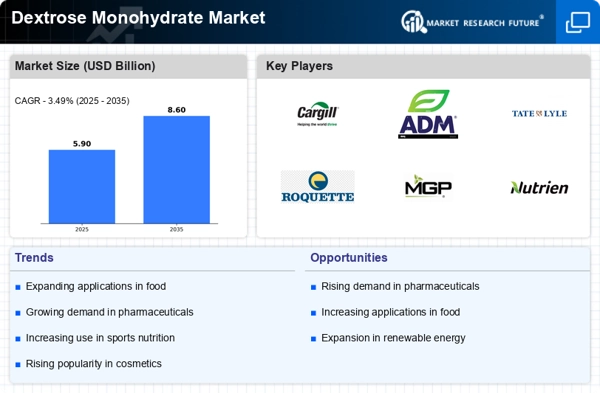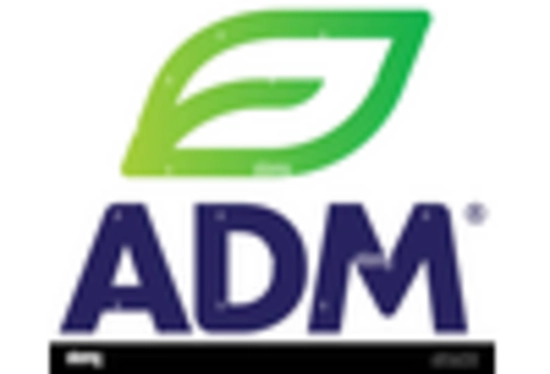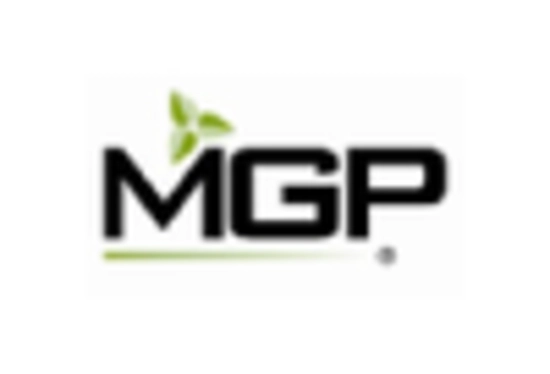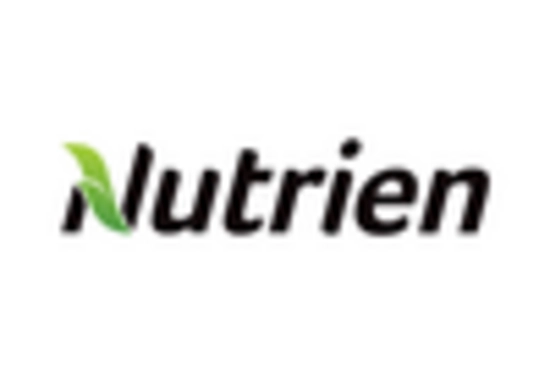Expansion in Sports Nutrition
The Dextrose Monohydrate Market is significantly influenced by the expansion of the sports nutrition segment. Athletes and fitness enthusiasts are increasingly seeking products that provide rapid energy replenishment, particularly post-exercise. Dextrose monohydrate serves as an effective carbohydrate source, facilitating quick recovery and enhancing performance. The sports nutrition market is anticipated to grow at a robust pace, with projections indicating a valuation exceeding several billion dollars in the near future. This growth is likely to encourage manufacturers to develop specialized formulations that incorporate dextrose monohydrate, thereby enhancing its application in energy drinks, gels, and recovery supplements. Consequently, the Dextrose Monohydrate Market stands to benefit from this trend as it aligns with the evolving preferences of health-conscious consumers.
Rising Demand in Nutraceuticals
The Dextrose Monohydrate Market is experiencing a notable surge in demand from the nutraceutical sector. This growth is primarily driven by the increasing consumer awareness regarding health and wellness. Dextrose monohydrate, known for its quick energy release, is being incorporated into various dietary supplements and functional foods. The market for nutraceuticals is projected to reach substantial figures, with estimates suggesting a compound annual growth rate of over 7% in the coming years. This trend indicates a shift towards preventive healthcare, where consumers are more inclined to invest in products that enhance their overall well-being. As a result, manufacturers in the Dextrose Monohydrate Market are likely to innovate and expand their product lines to cater to this burgeoning demand.
Rising Demand in Personal Care Products
The Dextrose Monohydrate Market is also benefiting from the rising demand for personal care products. Dextrose monohydrate is increasingly being incorporated into formulations for skincare and cosmetic products due to its moisturizing properties. As consumers become more conscious of the ingredients in their personal care items, the preference for natural and effective components is growing. The personal care market is projected to expand significantly, with estimates indicating a valuation in the hundreds of billions. This trend suggests that manufacturers in the Dextrose Monohydrate Market may find new avenues for growth by developing innovative personal care formulations that leverage the benefits of dextrose monohydrate, thus catering to the evolving consumer preferences.
Increasing Use in Confectionery Products
The Dextrose Monohydrate Market is witnessing a rise in the utilization of dextrose monohydrate in confectionery products. This trend is largely attributed to the sweetening properties of dextrose, which is often preferred over sucrose due to its lower glycemic index. As confectionery manufacturers strive to create healthier alternatives, the demand for dextrose monohydrate is expected to increase. The confectionery market is projected to grow steadily, with estimates suggesting a market size reaching several billion dollars. This growth presents opportunities for dextrose monohydrate suppliers to collaborate with confectionery producers, thereby expanding their market presence. Furthermore, the versatility of dextrose monohydrate in various applications, including candies and baked goods, enhances its appeal within the Dextrose Monohydrate Market.
Technological Innovations in Production Processes
The Dextrose Monohydrate Market is poised for growth due to technological innovations in production processes. Advances in manufacturing techniques are enhancing the efficiency and cost-effectiveness of dextrose monohydrate production. These innovations may include improved enzymatic processes and fermentation technologies that yield higher purity levels and better quality products. As production costs decrease, manufacturers are likely to pass on these savings to consumers, potentially increasing market penetration. The Dextrose Monohydrate Market could see a rise in competition as new entrants leverage these technologies to offer innovative products. This dynamic environment may lead to a more diverse product range, catering to various applications across food, pharmaceuticals, and other sectors.

















Leave a Comment